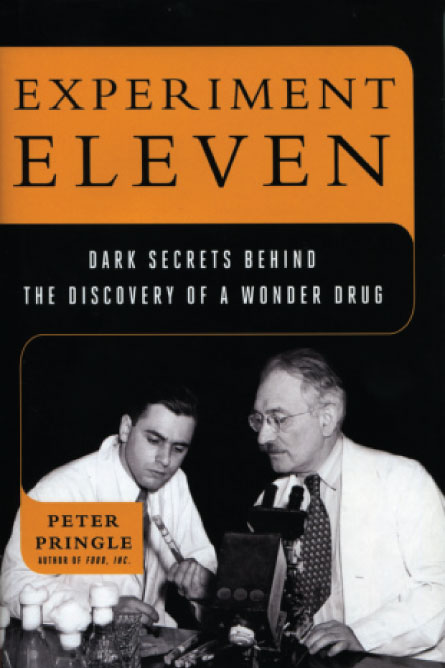Experiment Eleven
Dark Secrets Behind the Discovery of a Wonder Drug by Peter Pringle
- More than 2 years ago

In 1943, Rutgers graduate student Albert Schatz isolated two strains of bacteria that produced an unknown antibiotic. As World War II raged in Europe, tuberculosis and other diseases tore through refugee camps. New antibiotics were sorely needed, as Schatz, a former Army lab technician, knew well. He noted the new find under the heading “Exp. 11” in his lab notebook and shared his notes with his adviser, soil microbiologist Selman Waksman.
The antibiotic, streptomycin, became the first effective treatment for tuberculosis. As word of streptomycin’s success made its way into the papers, though, a strange thing happened. Schatz had made the discovery and performed the initial tests against TB, but Waksman alone received the credit. This wasn’t accidental. Waksman, Pringle writes, had launched “a furious and sometimes wacky campaign” to keep Schatz out of the limelight. Though others have previously set the record straight about Schatz’s role, Pringle gives Schatz his due in this comprehensive account of the story, pieced together from personal interviews and Waksman’s papers.
Tensions about the discovery grew until 1950, when Schatz leveled a lawsuit against his one-time adviser. The case ended in a settlement that gave Schatz the legal title of codiscoverer and a share of royalties. But the 1952 Nobel Prize in physiology or medicine went to Waksman for the discovery of streptomycin; Schatz, the committee ruled, was merely “an assistant of inferior rank.”
Pringle, a journalist, dedicates the book to researchers “who did the hard work, and never reaped the glory.” He opens up questions about ethics in research, and about who really deserves recognition in the team effort of scientific discovery.
Walker & Co., 2012, 254 p., $26







